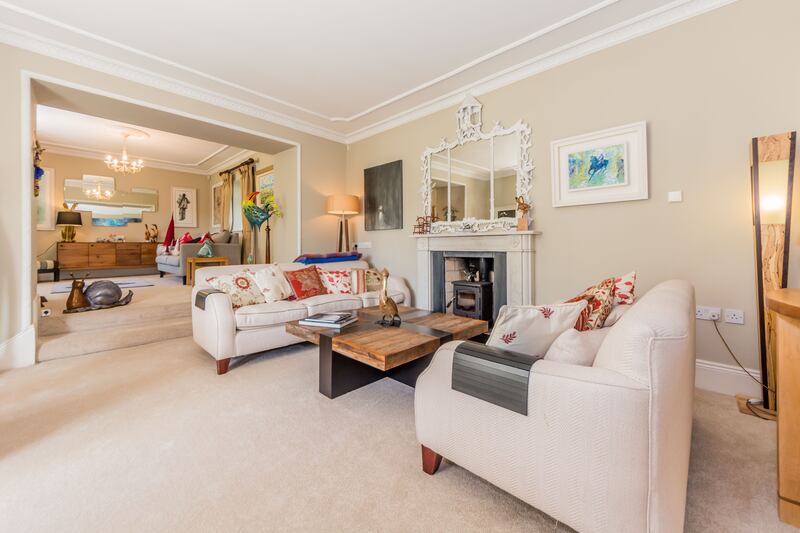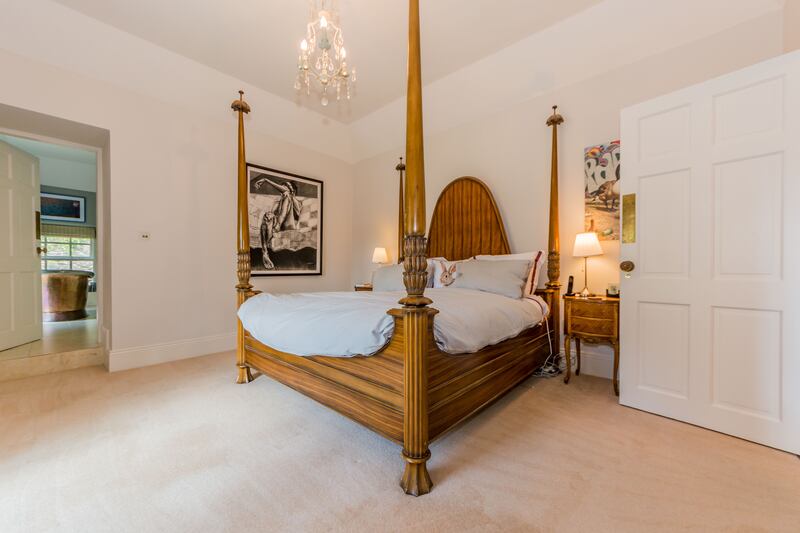Lying on an acre of now-landscaped gardens at the mouth of the Roaring Water River is Roaring Water House, a fine restored house dating back to 1780. Though strictly constructed in the Victorian era, it most certainly has strong influences from the Georgian period.
It was built by Jeremiah O’Sullivan, who was purported to be an importer/exporter, although it is suggested that his businesses may have been more akin to smuggling. But back then trade in and out of Ireland was limited, as the English government had introduced restrictions on many exports such as livestock and linens and the Wool and Glass Act of 1746 remained in place until 1780 – the same year the British parliament removed restrictions on Irish colonial trade. Coincidentally, the same year those restrictions were lifted was the year that O’Sullivan constructed this fine Georgian-style house.

He also built the quay – just downriver from the house – which today is used as a shelter and haven from the vagaries of Roaring Water Bay.
During the 1850s and 1860s a copper mine was developed near this site, which became known as Roaring Water Coppermine. The property, known as Roaring Water House, was then used as the accounting centre for the mines.
‘I want to honour the jersey as best I can’: Ben Healy relishing stint in Tour de France yellow
The best restaurants around Ireland worth travelling to
Dublin and London changed me in different ways. Australia has shown me things I considered impossible, are possible
I roar at my daughter so loudly for not wearing a bike helmet, a passerby asks her if she is okay
Today it is home to Barney Whelan, who worked as public relations manager for the ESB, director of marketing and communications at SafeFood – a North-South body established under the Belfast Agreement – and also, formerly the head of corporate communications for An Post.


Though retired, Whelan is still busy these days and is deeply involved in the arts. As vice-chairman of the National Gallery of Ireland, he also holds tenure as chairman of the Cork International Film Festival and chairs the Everyman Theatre in Cork.
He purchased Roaring Water House in 2015 for €875,000. “It had been modernised by past residents during the Celtic Tiger years so the gardens were all that we had to address at the time. Then later we installed an air-to-water heat pump [as there was underfloor heating in situ]. It has literally halved our energy bills and has made the house very cosy.”
The addition of a heat pump and insulation has resulted in the Ber rating rising from an F to a much more impressive C2.
Interiors extend to 232sq m (2,500sq ft) and are bright and warm. The country-style kitchen is by House of Coolmore, in a shaker style with Neff and Miele appliances. A drawingroom lies adjacent to a smaller diningroom, which has a fine bay window and an impressive Italian marble chimney piece.
There are three bedrooms in the main house – along with two rather large bathrooms – but adjacent lies an immaculate guest cottage which offers a bedroom, open-plan kitchen and diningroom with a further 51sq m (550sq ft) of space.


One of the bathrooms in the main residence has a lovely old copper bath. “These types of baths were designed for English army officers going abroad as they were light enough to carry. Here you can see right out to the water’s edge when having a bath.”
The now-landscaped grounds sweep down to a private natural stone quay. Though tidal, Whelan keeps his motorboat outside the tidal area “which is accessible three to four hours each side of high tide”.


As a graduate in marine biology he appreciates the “peace and calm of the magical place” which is a sanctuary for heron, swans, an egret and fox who now share their home with some artistic creatures that lie about the grounds, which Whelan amassed over the years.
He will miss the setting and “more importantly the neighbours” from his home of the past seven years, which has now been launched on the market through Charles McCarthy Estate Agents seeking €1.35 million.












